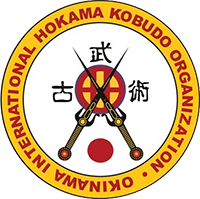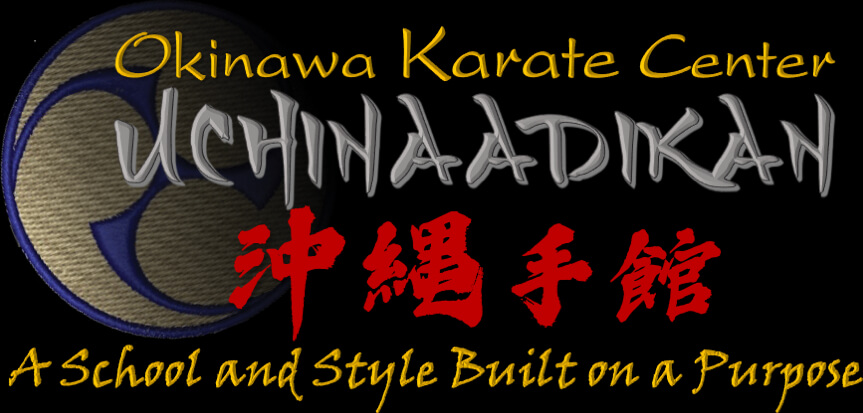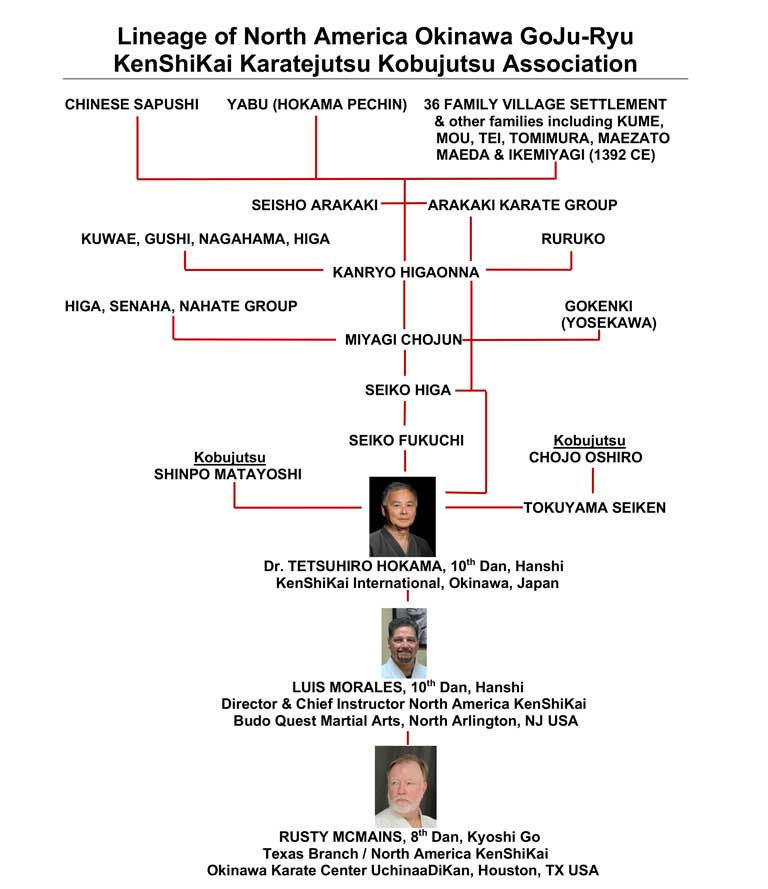Hokama Kobudo

International Hokama Kobudo Organization
International Hokama Kobudo Organization is an organization with branches in several countries and which goal is to teach and promote traditional Okinawan Kobudo as taught by Shihan Tetsuhiro Hokama, 10th Dan, Hanshi. While Shihan Tetsuhiro is globally known for being the founder and curator of the Okinawan Karate and Kobujutsu Museum and as an internationally recognized expert of “old style” Okinawa Goju Ryu (Seiko Higa lineage, he less known as one of Okinawa’s leading Kobudo masters. His Kobudo training began with his Grand Father (Tokuyama Seiken) who was a student of Oshiro Chojo (1887-1935). Oshiro Chojo was the student of Chinen Sanda (1842-1925) who was a student of the famous Bushi Chinen Kana (1797-1881).
In order to promote and preserve the old ways of Kobudo, Sensei Hokama created the Okinawa International Hokama Kobudo Organization as a separate organization from his International KenShiKai Goju-Ryu organization. And like the other KenShiKai dojo throughout the world, the Okinawan Karate Center UnchinaaDiKan offers instruction in both Karate and Kobudo, providing a complete and balanced system of study.
A Short History of Kobudo
Okinawan Kobudo, also known as Ryukyu Kobujutsu, is a Japanese term that can be translated as Ancient Martial Way of Okinawa. It has as long a history as the human settlement and use of weapons on the island. However, it went through a particular development in the Sanzan or three warring kingdoms period in the 11th and 12th centuries. At that time three kingdoms: Nanzan (Ozato Aji), Hokuzan (Nakijin Aji) and Chuzan King (King Tamagusuku) fought intense battles to control the island. It is at this time that various weapons and other martial technologies such as castle construction and siege warfare were developed. These battles finally resulted in the unification of the Island in the 15th century under the Shuri Dynasty.
The art was further developed within this new centralized Shuri warrior class (Pechin) of Okinawa. Like many other Asian countries these weapons traditionally included the sword, the spear, the battle axe, the halberd and various other bladed weapons and like Karate they came mainly from China. But other weapons were also imported from other Southeast Asian countries such as Thailand, Indonesia and Malaysia. There is no doubt that the arts surrounding these weapons would have continued their natural evolution had it not been for two important historical events. The first was the Order of the Sword an edict by King Soshin (1477-1526) by which the Okinawan people and the warrior classes were no longer allowed to bear arms. The second was the 'Policy of Banning Weapons' enforced after the Satsuma Invasion in1609.
The invasion of the Japanese Satsuma clan resulted in the repression and oppression of the indigenous Okinawan warrior classes and nobility (Aji). Many of the upper class and nobility were forced outside of the protections of the Ryukyuan Palace and now had to live amongst the common people. Without these protections, they developed their palace and warriors arts into the Karate and Kobudo we know today.
A Note About Kobudo Styles or Systems
Unlike modern Karate which clearly delineates between the 3 main regions where Karate developed, Naha, Shuri and Tomari, modern Kobudo systems are largely compilations of different kata and techniques derived from various family lineages and geographic locations. Therefore, most Kobudo Kata bear the name of either a person who is believed to have originally developed the Kata or the name of the village where they came from.
Therefore, the more popular styles of modern Kobudo today are collections of these different Kata and traditions. The genius of the modern compilers was to introduce progressive training methods as well as the systematization of Kobudo’s pedagogy. Through their tireless efforts and now that of Shihan Hokama, these weapon arts have been preserved for future generations.




 ·
· 